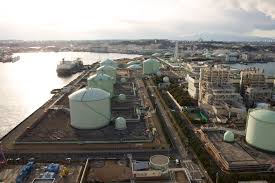-
Wood Mackenzie sees emissions taxes creating dynamic forces shaping LNG movements
Date posted:
-
-
-
Post Author
Patrick LaveryCombustion Industry News Editor
-
-

Energy and commodity analysts Wood Mackenzie have released a thought piece on how greenhouse gas emissions taxes on imports of LNG could shape global flows of the commodity.
LNG producers and transporters have until now typically been reluctant to reduce greenhouse gas emissions from their supply chains, usually because there is little financial incentive to do so (and because buyers do not demand it), but the European Union’s Emissions Trading System’s looming extension to cover shipping this year is set to change that picture. In addition, the EU has agreed to “start monitoring methane emissions of countries and companies and to define acceptable limits for fossil-fuel imports across the value chain”, although this is now only in a first draft form, covering new LNG import contracts only (future revisions may expand the scope).
As LNG will now be subject to the need to purchase carbon permits, LNG prices will rise (creating an additional strain on industry), splitting the global LNG market into two; less carbon-intense LNG will be more profitable for those companies that produce it and sell it in the EU, although what benchmark of carbon intensity, or if project-specific calculations will be used to determine the number of permits required, will also be influential.
However, in Wood Mackenzie’s reckoning, such incentives will be insufficient to induce wholesale, global change (especially with the high variability of carbon permit prices within the EU ETS) – matching or similar incentives in Asia would be required. The analysis includes estimates of the greenhouse gas intensity of LNG production by region, with the US and Mexico being highest, followed by the Asia-Pacific, Middle East, Africa, Russia and Norway, and then other American. (The higher intensity of US production in particular comes partly from higher methane leakage associated with fracking, a major means of extraction, and also from longer pipeline length to liquefaction facilities.) The US’s own methane charge legislation, as well as the Global Methane Pledge, will also be factors in shaping producers’ decision making. In Wood Mackenzie’s analysis (using a carbon price of US$100/tonne for three scenarios), the effect on prices in the EU would be between a 6% (if methane only was taxed) to 18% (if all GHG emissions were taxed), and the higher price differential would also apply in Japan and Korea if those countries were to apply emissions taxes.
Higher prices, too, would mean an eventual shift away from natural gas use in those countries, meaning also a long-term shift in incentives for producers to decarbonise. As is often the case, the intended consequences of incentives may be accompanied by unintended and complex consequences.
